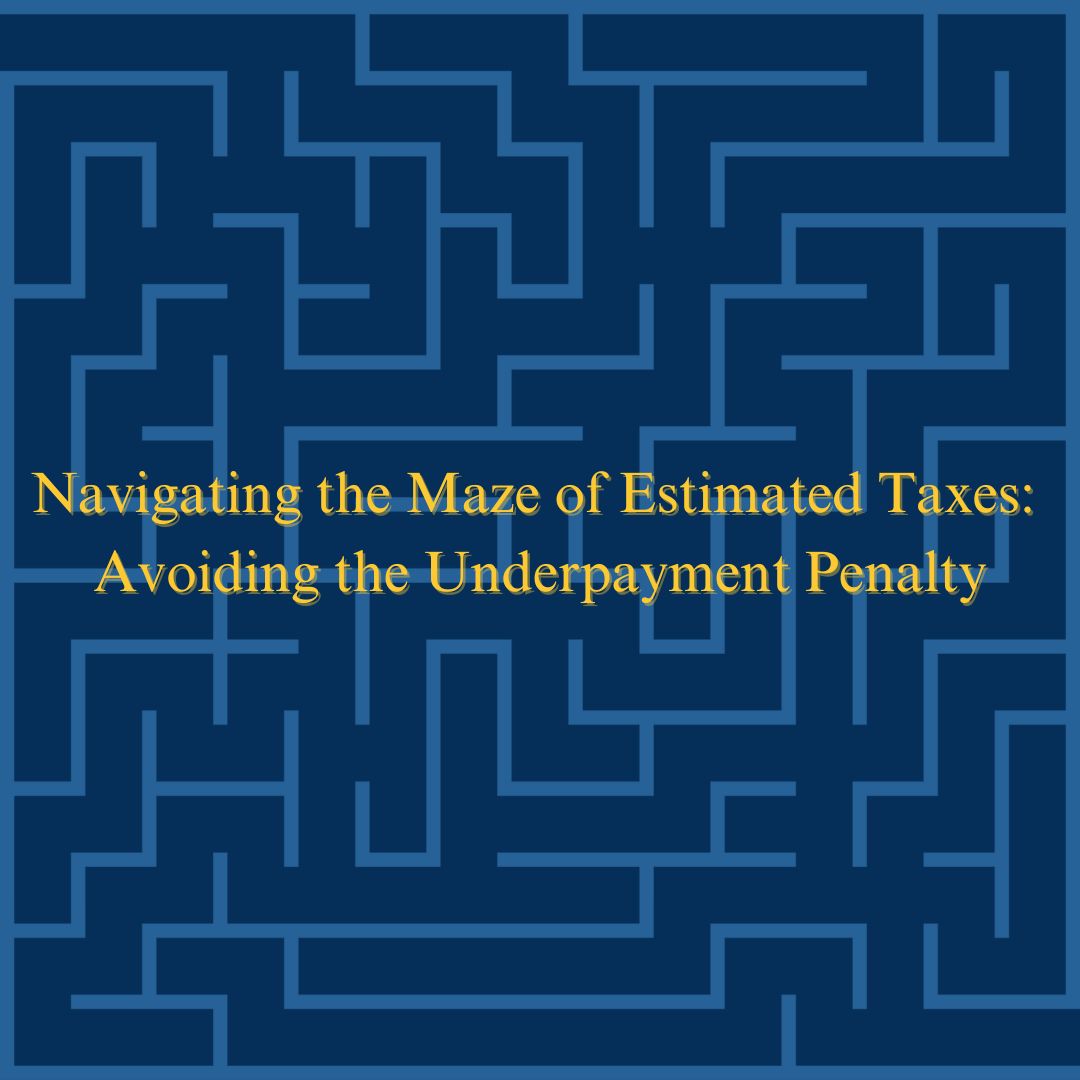
Paying taxes is an inevitable part of business and personal finance, but what happens when you accidentally underpay? This article delves into the complexities of underpaying estimated taxes, exploring the penalties involved, how to avoid them, and what to do if you find yourself in a bind.
I. Introduction to Underpayment Penalty
A. What Is an Underpayment Penalty?
The IRS imposes an underpayment penalty when taxpayers fail to pay enough estimated taxes throughout the year. This penalty is essentially a fine for not fulfilling your tax obligations in a timely manner. Typically, you must pay at least 90% of your current year’s tax liability or 100% of the previous year’s tax to avoid this penalty.
B. General Rules for Avoiding Penalty
- Less than $1,000 Owed: If after applying all withholdings and credits, your tax due is less than $1,000, you’re off the hook for the penalty.
- Payment Thresholds: Pay at least 90% of the current year’s tax or 100% of the tax from the previous year.
C. Special Rules for Specific Taxpayers
- Farmers and Fishermen: Have special due dates for estimated taxes due to the seasonal nature of their income.
- Higher Income Taxpayers: Those with higher incomes might need to pay 110% of the prior year’s tax to avoid penalties.
D. Publication 505: Tax Withholding and Estimated Tax
This IRS publication is a must-read for understanding how to manage your tax payments effectively.
II. Annualizing Income and Unequal Payments
A. Purpose of Annualizing Income
For those with uneven income throughout the year, annualizing helps in calculating estimated tax payments more accurately.
B. Use of Form 2210
Form 2210 is used by individuals, estates, and trusts to figure out the underpayment penalty or to claim a reduction in the penalty.
C. Reporting Estimated Tax Penalty on Returns
- Form 1040 and 1040-SR: Instructions on how to report the penalty.
- Form 1120: For corporations, detailing how to handle underpayment penalties.
III. Penalty Waivers
A. Waivers Due to Unusual Circumstances
- Casualty, Disaster, or Other Unusual Circumstances: The IRS might waive penalties if your underpayment was due to unforeseen events.
B. Waivers for Retirement or Disability
- Retirement After Age 62: If you retire, the IRS might be lenient.
- Becoming Disabled: Similar considerations apply for those who become disabled.
C. Requesting a Waiver
Using Form 2210 instructions, taxpayers can request a waiver if their underpayment was due to reasonable cause and not willful neglect.
Basics of Estimated Taxes for Individuals
I. Introduction to the U.S. Tax System and Estimated Tax Payments
The U.S. operates on a pay-as-you-go system where estimated taxes are crucial for those not subject to regular withholdings.
II. Who Needs to Pay Estimated Taxes
- Individuals with income not subject to withholding.
- Those who owe at least $1,000 when filing their return.
- Self-employed individuals and gig economy workers.
III. When to Pay Estimated Taxes
Quarterly payments are due on April 15, June 15, September 15, and January 15.
IV. How to Figure Estimated Taxes
Using Form 1040-ES, adjust for life changes or new tax laws.
V. How to Pay Estimated Taxes
Options include online payments, IRS Direct Pay, or setting up electronic funds withdrawal.
VI. Penalties Related to Estimated Taxes
- Underpayment Penalty: Details on how to avoid or mitigate this penalty.
- Waiver of Penalty: Conditions under which penalties might be waived.
VII. 2018 Penalty Relief
Due to tax law changes, the IRS offered relief for those who paid at least 80% of their tax liability.
How to Pay Estimated Taxes to Avoid IRS Penalties
V. How to Pay Estimated Taxes
- Methods: Online, by phone, or mail.
- Systems: Electronic Federal Tax Payment System, IRS Direct Pay.
KEY TAKEAWAYS
- Penalty Structure: Understand the penalty for not paying enough or paying late.
- Avoidance: Ensure you meet the payment thresholds or qualify for a waiver.
Navigating the estimated tax system can be daunting, but with the right knowledge and tools, taxpayers can avoid the pitfalls of underpayment penalties, ensuring compliance with IRS regulations while managing their financial health effectively.
Disclaimer: The information provided above is not meant to be legal or tax advise. You should consult your CPA and attorney to determine the best course of action for your situation.
Mitzi E. Sullivan, CPA is a cloud based professional services provider
specializing in cloud accounting.